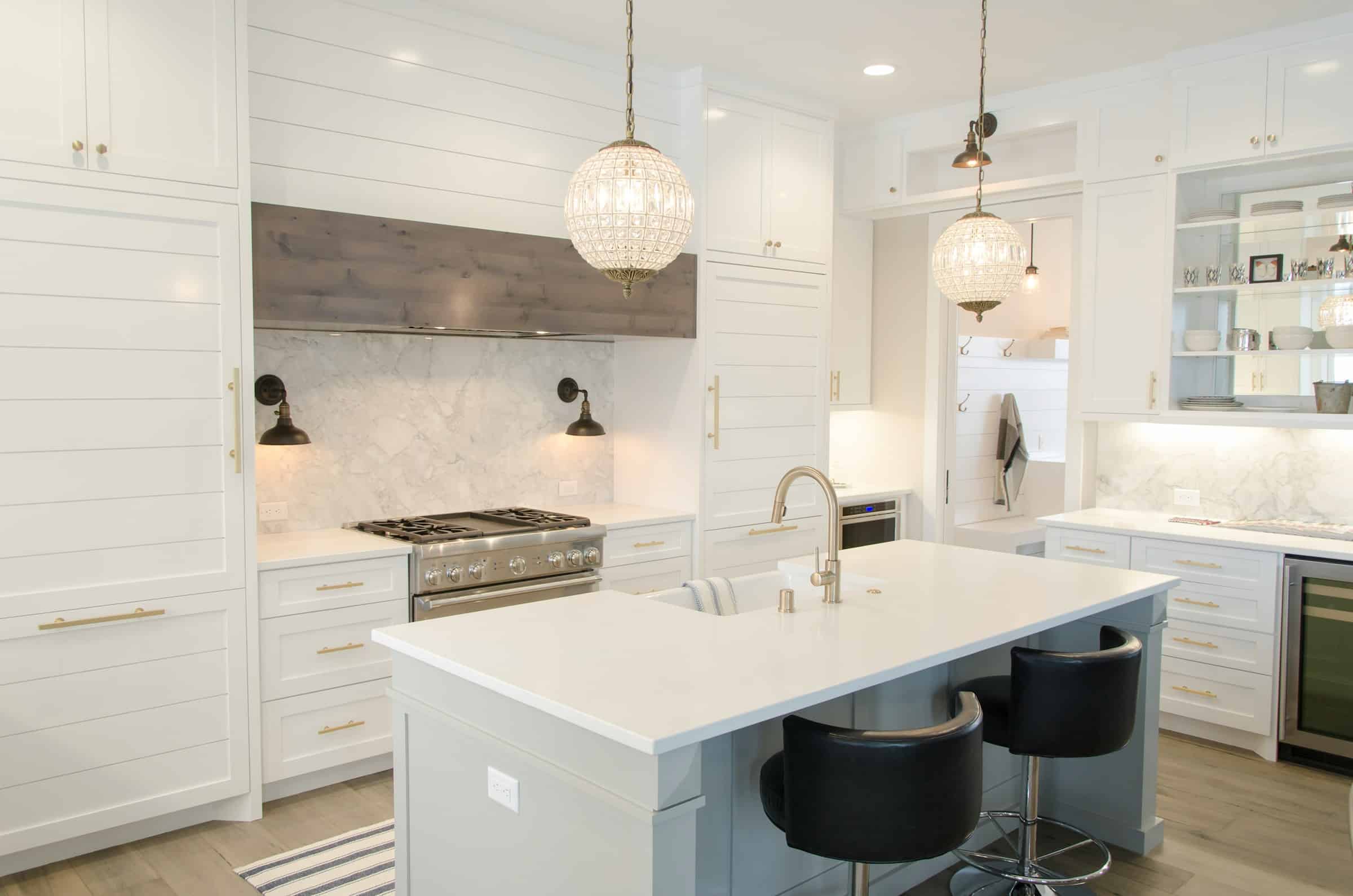What’s the Best Way to Design an Accessible Kitchen for Wheelchair Users?

Designing an accessible kitchen can be a challenging task, especially when you need to consider wheelchair users. It involves more than just making sure there’s enough room for a wheelchair to move around. It’s a matter of convenience, usability, and independence. The design needs to ensure equal access to all kitchen amenities like cabinets, drawers, sinks, and appliances. Let’s delve into key considerations when designing an accessible kitchen for wheelchair users.
Designing for Space and Mobility
When designing a kitchen for wheelchair users, space is a crucial factor. You want the kitchen to be as accessible as possible, enabling users to move freely and smoothly. In an ADA-compliant kitchen, the minimum clear floor space for a wheelchair is 30 by 48 inches, which allows the wheelchair user to approach and maneuver comfortably.
Have you seen this : How Can You Design a Compact Urban Garden to Grow a Variety of Vegetables in Pots?
Similarly, the kitchen layout should facilitate a clear path for mobility. U-shaped or L-shaped kitchens tend to be more maneuverable for wheelchair users, allowing them ample space to turn and navigate. Also, make sure there is a 60-inch turning radius for wheelchairs to turn about freely.
Height Considerations for Cabinets and Countertops
The height of the cabinets and countertops plays a key role in an accessible kitchen design. Generally, wheelchair users require lower work surfaces to perform tasks comfortably. According to ADA guidelines, countertops should be 28 to 34 inches off the finished floor, which will allow wheelchair users to access the countertop with ease.
In the same genre : Room Acoustics 101: Optimizing Sound Quality in Your Home
For cabinets, consider installing pull-down or pull-out shelves that can be easily accessed from a seated position. Cabinets with D-shaped handles are more accessible as they can be easily gripped and pulled. Likewise, drawers and shelves should be at a height between 15 to 48 inches for optimal accessibility for wheelchair users.
Accessible Sink and Appliances Design
Sinks and appliances are integral parts of a kitchen and should be easily accessible for wheelchair users. For sinks, install them at a height of 34 inches maximum, with clear knee space underneath. The sink should be shallow to allow an individual in a wheelchair to reach the bottom with ease.
As for appliances, opt for those designed with accessibility in mind. Front control ranges and side-by-side refrigerators are more accessible for wheelchair users. Ovens with side-hinged doors and bottom or countertop microwaves are also preferable. All controls should be at a height that can be easily reached from a wheelchair.
Storage and Organization for Easy Access
Storage is an essential element in kitchen design, and it needs careful consideration when designing for wheelchair users. Lower cabinets, pull-out pantries, and deep drawers are excellent storage solutions. This makes it easy for wheelchair users to retrieve items without needing to reach overhead or strain.
Consider installing adjustable-height shelves and retractable work surfaces to add flexibility to the kitchen design. Use pull-out or drop-down shelves for easy access to items stored higher up. Also, incorporate Lazy Susans in corner cabinets to maximize storage and ensure easy retrieval of items.
Ensuring ADA Compliance in Kitchen Design
The Americans with Disabilities Act (ADA) offers guidance when designing accessible kitchens. These guidelines ensure that people with mobility limitations can access and use all areas of the kitchen. Ensure to abide by these regulations during the kitchen design process.
The ADA guidelines include specifics on clear floor space, turning radius, counter and sink heights, knee and toe clearance, and appliance accessibility. When designing your kitchen, make sure all elements, from cabinets to appliances, adhere to these guidelines.
In designing an accessible kitchen, remember that it’s not just about meeting ADA standards but creating an environment that supports independence and ease of use. The right design will not only cater to wheelchair users but also accommodate others with varying mobility needs. Designing for accessibility enhances the kitchen experience for everyone and makes it an inclusive space.
Integrating Technology in Accessible Kitchen Design
Incorporating technology is a modern approach to create an accessible kitchen for wheelchair users. It can make tasks easier and foster independence. From automatic faucets to adjustable countertops, technology can assist in making the kitchen more wheelchair accessible.
When considering technology, pay attention to the placement of light switches and electrical outlets. According to ADA guidelines, switches and outlet should be placed no higher than 48 inches from the floor to be easily reachable by a wheelchair user.
Incorporate appliances with smart features that can be controlled remotely or via voice commands. Refrigerators that can display the inside contents on a screen can negate the need for a wheelchair user to constantly open and close the door. Ovens that can auto-adjust temperature and cooking time can reduce the need for constant monitoring.
Consider installing motorized adjustable-height countertops. These can be easily lowered or raised to accommodate a wheelchair user’s height, allowing them to prepare meals comfortably. Automatic faucets with motion sensors can allow wheelchair users to operate with no need to reach for a lever or knob.
Smart Lighting and Flooring Options
Lighting plays an essential role in an accessible kitchen design. Proper lighting can enhance visibility and make spaces easier for wheelchair users to navigate. Under-cabinet lighting can illuminate countertops, making it easier to prepare food. Use of smart bulbs that can be dimmed or brightened via remote control or voice command can be a convenient feature for wheelchair users.
Flooring in a wheelchair accessible kitchen should be slip-resistant and easy to maneuver on. Consider materials like vinyl or linoleum, which provide a smooth surface for wheelchairs to glide upon and are also easy to clean. Avoid high-gloss finishes that can create glare and make it difficult for individuals with visual impairments to navigate the kitchen.
Conclusion
Designing an accessible kitchen for wheelchair users requires thoughtfulness and attention to detail. Remember that the goal is to create a space that promotes independence and ease of use. From the layout and mobility space to height considerations for cabinets and sinks – each aspect should be carefully planned.
Incorporating technology and smart design choices can significantly enhance the functionality and accessibility of a kitchen for wheelchair users. Abiding by ADA guidelines ensures your kitchen design is in compliance and suitable for individuals with varying mobility needs.
A well-planned kitchen remodel can transform a regular kitchen into an all-inclusive space that is comfortable, convenient, and accessible to all. Always strive to go beyond the ADA guidelines, and aim for a free design that suits the specific needs of the end-user. After all, the kitchen is the heart of the home, and every heart should be open to everyone.
